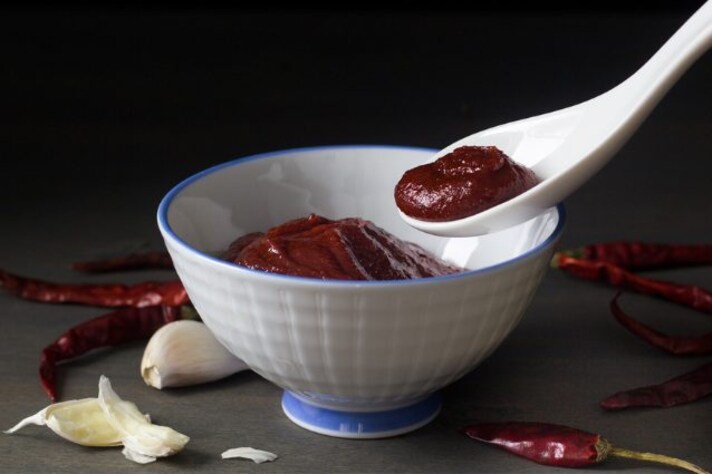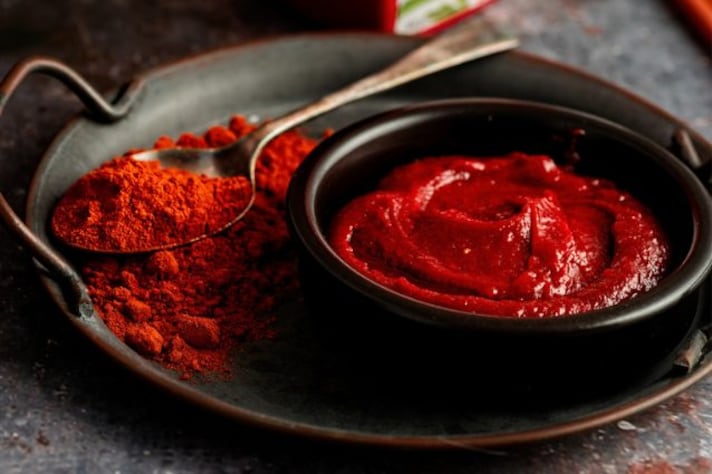The Versatility of Gochujang: How to Use This Spicy, Sweet Korean Paste
Gochujang is a flavorful Korean paste that combines spicy, sweet, and umami elements, making it a versatile addition to many dishes. From marinades and stir-fries to soups and fusion recipes, this paste enhances everything it touches. Rich in probiotics and antioxidants, gochujang is a must-have for anyone looking to add complexity and depth to their cooking.

Gochujang is a spicy, sweet, and savory Korean paste made from fermented soybeans, glutinous rice, chili peppers, and salt. This rich red paste is a staple in Korean cuisine, known for its complex, layered flavor profile that combines heat, sweetness, and umami. It's a versatile ingredient that can enhance everything from traditional Korean dishes to fusion recipes.
Why Gochujang Is So Special
The unique flavor of gochujang comes from its fermentation process, which develops a deep, robust taste. The fermentation adds umami richness, while the chili peppers provide a spicy kick and the glutinous rice contributes a subtle sweetness and creamy texture. Unlike traditional hot sauces, gochujang is not just about heat—it’s a balanced, multi-dimensional paste that can elevate a variety of dishes.
Benefits of Gochujang
In addition to its bold flavor, gochujang offers a variety of health benefits:
- Rich in probiotics – Due to its fermentation, gochujang is rich in beneficial bacteria that support gut health and digestion.
- Packed with antioxidants – The chili peppers in gochujang provide vitamin C and capsaicin, which have anti-inflammatory properties.
- Boosts metabolism – The capsaicin in chili peppers is known to increase metabolism, potentially aiding in weight management.
- Low in calories – While it adds great flavor, gochujang is low in calories, making it a great option for enhancing dishes without adding too many extra calories.

How to Use Gochujang in Cooking
Gochujang is incredibly versatile, and it can be used in a wide variety of ways to bring depth and richness to your dishes. Here are some of the best ways to incorporate this spicy paste into your meals:
1. In Korean Dishes
Gochujang is a key ingredient in many traditional Korean dishes. It’s used in sauces, marinades, and soups to add heat and flavor.
Try This: Use gochujang to make bibimbap, a popular Korean rice dish topped with vegetables, meat, and a fried egg. Drizzle gochujang sauce over the top for the perfect balance of heat and sweetness.
2. As a Marinade for Meat
Gochujang’s combination of spice, sweetness, and umami makes it an ideal marinade for meats like chicken, pork, or beef. It adds a delicious sticky glaze when cooked, creating a beautifully caramelized crust.
Try This: Marinate chicken wings in gochujang, soy sauce, sesame oil, and honey for a spicy-sweet flavor before grilling or baking.
3. In Stir-Fries
Add gochujang to stir-fries for an extra kick and a layer of complex flavor. Its thick consistency helps it coat the vegetables and protein, ensuring every bite is full of flavor.
Try This: Stir-fry tofu or vegetables with gochujang, soy sauce, garlic, and ginger for a quick, savory meal.
4. In Sauces and Dressings
Gochujang works wonderfully as a base for sauces and dressings, adding spice and depth to your dishes. You can blend it with vinegar, honey, and sesame oil for a tangy-sweet dipping sauce or salad dressing.
Try This: Whisk gochujang into a dressing with rice vinegar, sesame oil, and a bit of sugar for a delicious salad dressing or dipping sauce for dumplings and spring rolls.

5. In Soups and Stews
The depth of flavor that gochujang provides makes it an excellent addition to soups and stews. It can be used as a base for broths or added to enhance the flavor of a simmering pot.
Try This: Add a spoonful of gochujang to kimchi jjigae (Korean kimchi stew) or banchan (Korean side dishes) to deepen the flavor and add a spicy kick.
6. In Fusion Dishes
Gochujang also works well in fusion cuisine. Its complex flavor makes it a great addition to dishes like tacos, burgers, and even pasta.
Try This: Spread gochujang on a burger bun instead of regular ketchup for a spicy, savory twist, or stir it into spaghetti sauce for a Korean-inspired pasta.
Where to Buy Gochujang
Gochujang can be found at most Asian supermarkets in the Korean food section. It’s typically sold in small plastic tubs or jars. You can also find it in many grocery stores in the international aisle or online. Look for authentic Korean brands for the best flavor.
How to Store Gochujang
Once opened, store gochujang in an airtight container in the refrigerator to keep it fresh. It can last for several months due to its fermentation process, but be sure to check for any changes in color or flavor over time.
Final Thoughts
Gochujang is a must-have ingredient in any kitchen, offering a perfect balance of spicy, sweet, and umami flavors. Its versatility makes it suitable for a wide variety of dishes, from traditional Korean meals to creative fusion recipes. Whether you're marinating meats, stirring it into soups, or using it in sauces, gochujang can transform your cooking and elevate your meals to a whole new level.
;Resize,width=767;)
;Resize,width=712;)
;Resize,width=712;)
;Resize,width=712;)
